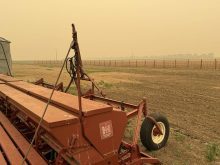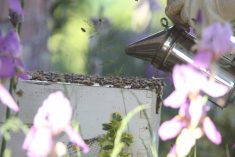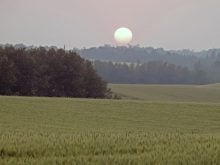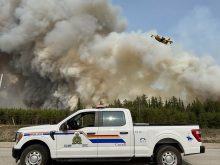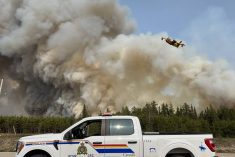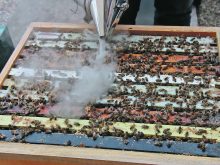Wildfire smoke has slowed the bees while the fires have forced animals such as bears into areas where hives are located
Prairie beekeepers facing dry conditions and wildfire smoke are welcoming recent rain as they deal with warmer weather that initially helped them after a cold start this spring.
“It was getting extremely dry in certain areas,” said executive director Rod Scarlett of the Canadian Honey Council. “This is, just as I say, it’s kind of a godsend both to the farmer and to the beekeeper.”
The County of Stettler, Alta., east of Red Deer declared an agricultural disaster June 14 because of drought, making it the first municipality in the province to make such an announcement this year. Officials cited factors such as an early extended heat wave and no moisture that followed a light snowpack with no run-off.
Read Also

Using artificial intelligence in agriculture starts with the right data
Good data is critical as the agriculture sector increasingly adopts new AI technology to drive efficiency, sustainability and trust across all levels of the value chain.
Scarlett said warm weather this spring initially helped beekeepers, who earlier faced unusually cold temperatures across the Prairies. He warned April 19 they could start losing bees if pollen was delayed and the insects could not fly, potentially deepening winter losses.
“The warm weather has been fantastic for us,” said president Curtis Miedema of the Alberta Beekeepers Commission during an interview June 14 about his operation near Barrhead.
The Canadian Association of Professional Apiculturists is expected to release a report in early July tallying winter bee losses. Scarlett estimated April 19 that total losses across the three prairie provinces were likely 20 to 25 percent, down from a record-breaking 45 percent at the same time last year because of varroa mites.
“It’s been a really nice spring, so the bees have built up well,” said Miedema about the Barrhead area. “I can’t necessarily speak to the whole drought situation, but I feel like we’ve been blessed with some rain in our area and so things aren’t looking too bad, but I haven’t really spoken to many beekeepers in the real dry spots.”
Dry conditions in southern Alberta substantially slowed the growth of crops relied on by bees, said Scarlett during an interview June 16. However, the situation hasn’t been as extreme as the record-breaking heat waves and drought that hit the Prairies in 2021, he said.
Rain in the past few days fell in many areas where it was needed, helping canola crops that had begun to bolt, Scarlett added.
“And this will certainly help them start to bolt now, and once the canola starts to bloom, that’s where beekeepers make their money.”
However, crops in southern Alberta have also been affected by a major leak in the canal system of the Lethbridge Northern Irrigation District, forcing farmers to ration water. Rain typically eases in July and August, making the district’s nearly 200,000 irrigated acres a significant factor in the success of local beekeepers, said Scarlett.
“They may not have the same honey production as, let’s say, areas around Westlock, which are known for bigger honey crops, but if you don’t have a honey crop in the Lethbridge area, you suffer, so it’s important to those commercial operations.”
Dry weather has also led to hundreds of wildfires across Canada, burning millions of acres of forest and substantially reducing visibility due to smoke, said Scarlett. Smoke from sources such as burlap is typically used by beekeepers to briefly make their colonies more docile and easier to handle, he said.
Although the wildfire smoke has been much more extensive and long lasting, it doesn’t really hurt honeybees so much as it slows them down, he said.
Wildlife such as bears, skunks and raccoons that prey on hives are also being disrupted by the fires, forcing them to flee to farmers’ fields in Alberta, Saskatchewan and Manitoba where the colonies or bee yards are located, said Scarlett. He has heard reports of bears destroying bee yards, prompting beekeepers to erect expensive electric fences to keep them out.
As part of its Wildfire Damage Compensation program, Alberta’s Agriculture Financial Services Corp. recently announced a three-year pilot project to compensate eligible beekeepers for bear predation of beehives.




